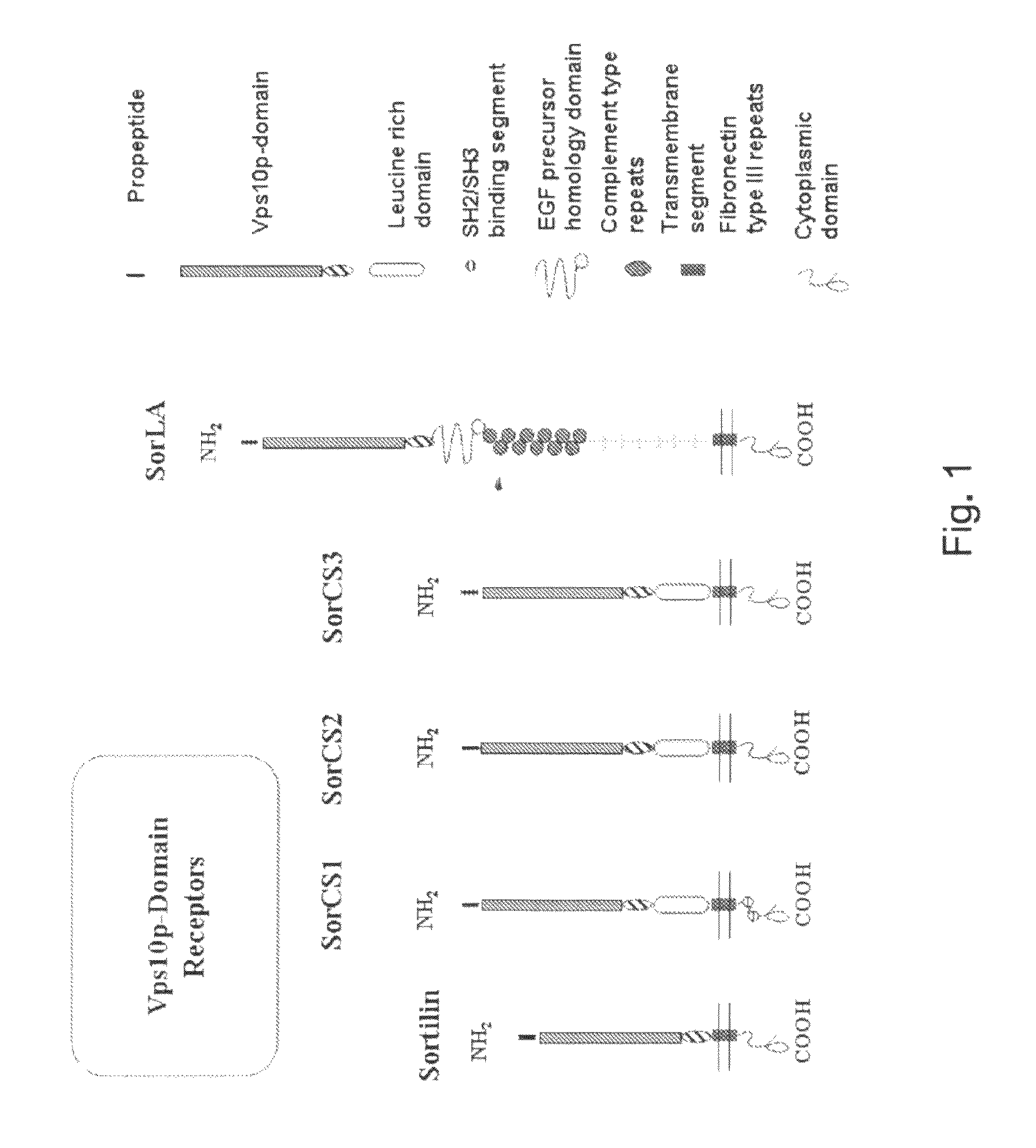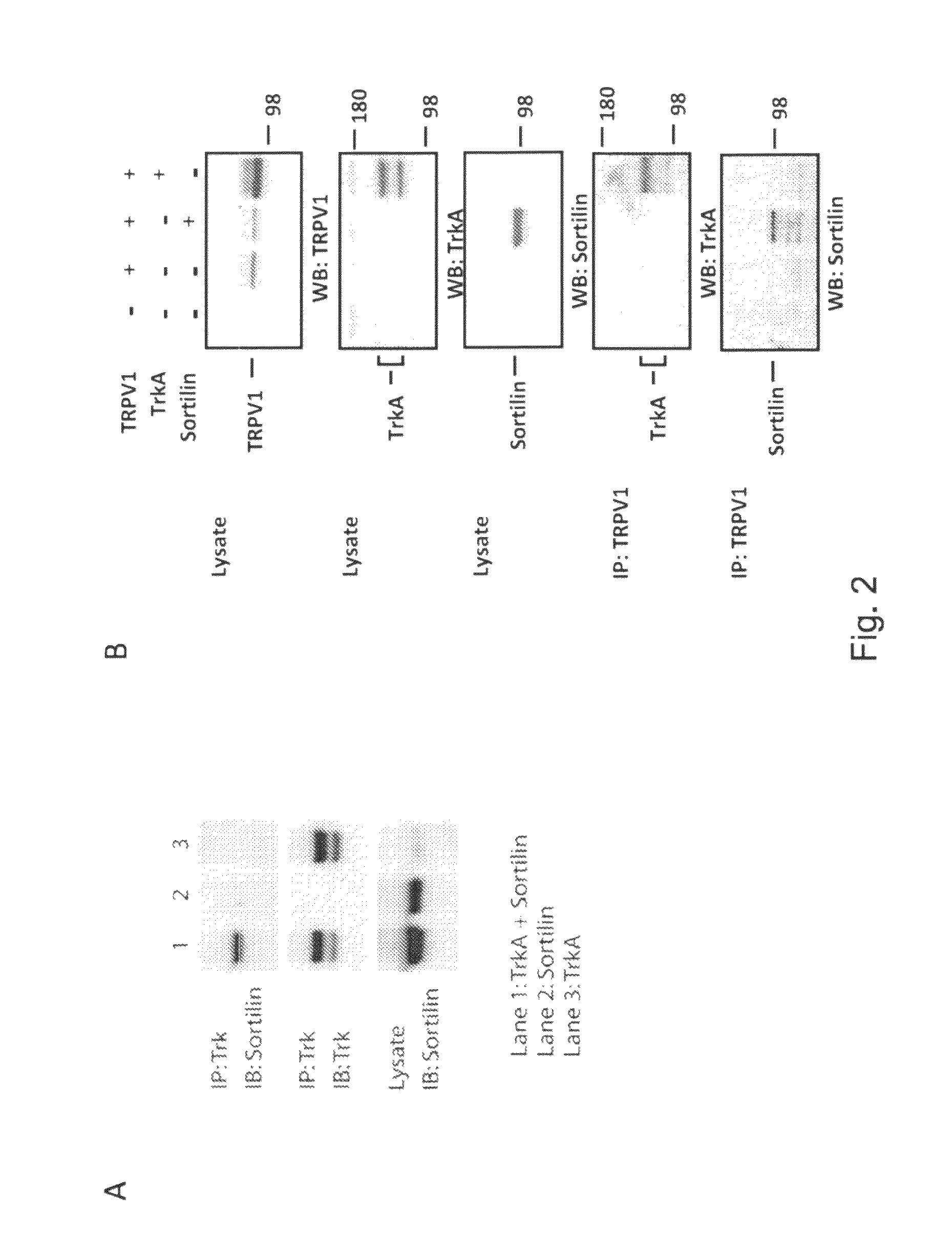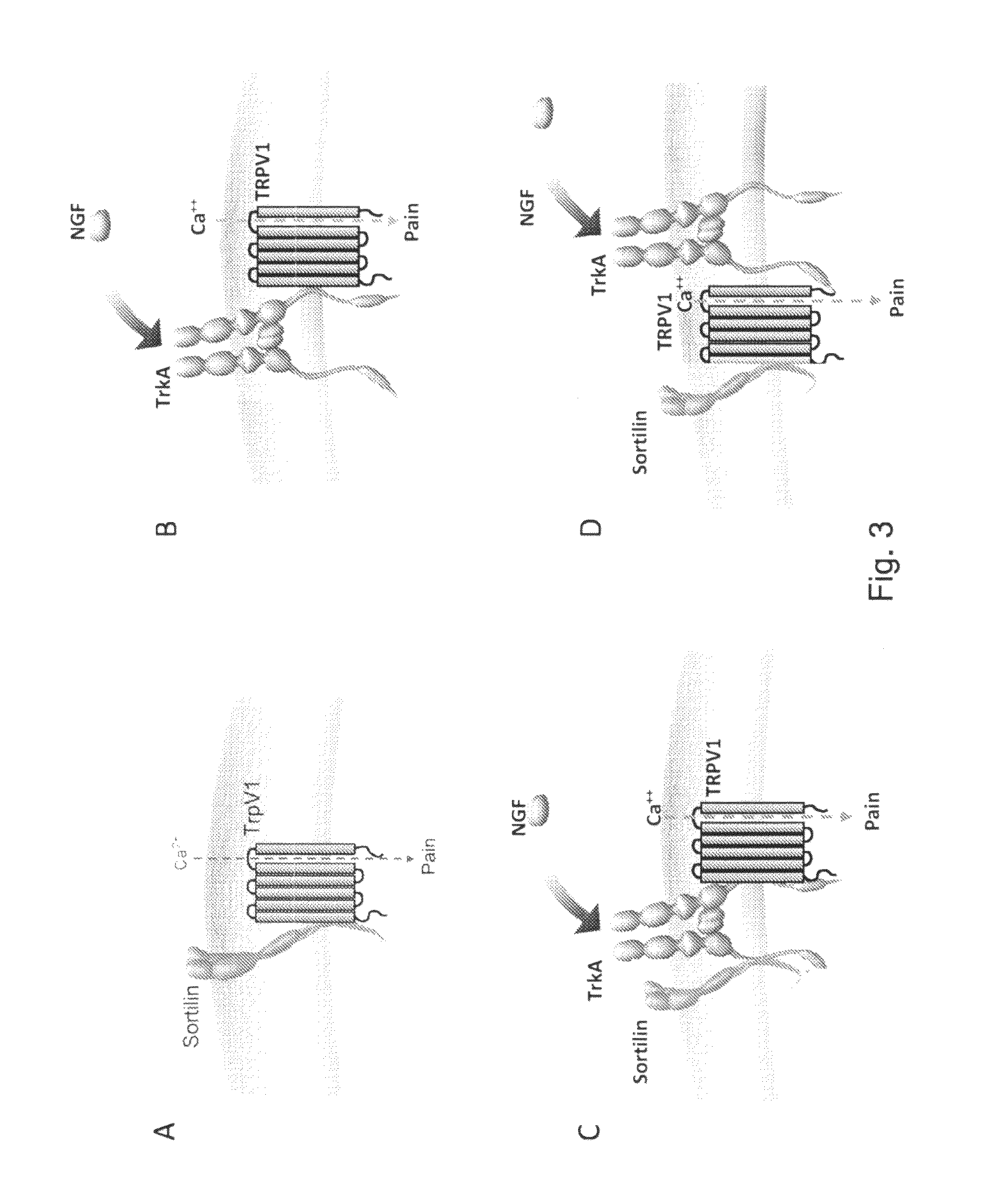Modulation of the TrpV: Vps10p receptor system for the treatment of pain
a vps10p receptor and trpv technology, applied in the field of analgesia or pain relief, can solve the problems of insufficient pain relief offered by the healthcare system, no protective biological function of chronic pain, no causal cure for neuropathic pain conditions, etc., and achieve the effect of increasing heat sensitivity
- Summary
- Abstract
- Description
- Claims
- Application Information
AI Technical Summary
Benefits of technology
Problems solved by technology
Method used
Image
Examples
example 1
Determining Whether Sortilin, TrkA and TrpV1 are Able to Physically Interact
[0813]HEK293 cells stably transfected with combinations of sortilin, TrkA and TrpV1 were crosslinked with DSP (Pierce) and cell lysates were subjected to immunoprecipitation using anti-TrkA or anti-TrpV1 (Santa Cruz Biotechnology) and Sepharose GammabindG beads (G&E Biosciences). IP eluate and lysates were subjected to SDS-PAGE and western blotting. Sortilin-TrkA (FIG. 2A), TrpV1-sortilin and TrpV1-TrkA (FIG. 2B) complexes were demonstrated, suggesting that these receptors are capable of forming dimeric and trimeric complexes with each other.
example 2
Determining Whether Inactivation of Sortilin Affects Expression of TrkA and TrpV1
[0814]Adult mice were decapitated, the lumbar DRG dissected, fixed and cryosectioned at 15 μm. Expression of Sortilin, TrkA and TrpV1 were performed by incubation with primary antibody (anti-sortilin from Alomone Labs, anti-TrkA fra Reichardt lab at UCSF and anti-TrpV1 from Neuromics Lab) followed by fluorescently labeled secondary antibody from Molecular Probes. Samples were coverslipped and images acquired on a Zeiss LSM510 confocal microscope. FIG. 4b illustrates expression of sortilin, TrkA and TrpV1 in L4 DRG neurons and it can be seen that these molecules are all expressed in small and medium size (=nociceptive) neurons. No difference in number of neurons positive for TrkA and TrpV1 was observed between wild-type and Sortilin (− / −) mice, which both demonstrated an expression profile as demonstrated in FIG. 4a (except for sortilin which is absent in sortilin (− / −) mice (data not shown)).
example 3
Determining Thermal and Mechanical Sensitivity in Response to Sortilin Inactivation
[0815]Hot plate test: Adult mice (10-20 weeks old) were placed in clear acrylic cages on the hot plate (Buch&Holm, Denmark) set at 55° C. The latency to respond with hind paw lick was measured and the mouse immediately removed (Bannon & Malmberg (2007) Curr. Protoc. Neurosci. 41, 8.9.1-8.9.16). Each animal was tested only once on the same day.
[0816]Tail immersion assay: Female mice were briefly (½-1 min) immobilized in a tube restrainer during the procedure. The distal third of the tail was immersed in 50° C. water and the latency to flick the tail was measured. Each animal was tested only once on the same day.
[0817]Von Frey test: the mechanical withdrawal threshold on the plantar surface of the hind limbs was measured using calibrated von Frey hairs 0.008 g-1.4 g (Touch-Test® Sensory Evaluators, North Coast Medical, CA). Von Frey hairs of increasing bending force were each applied 5 times to both sid...
PUM
| Property | Measurement | Unit |
|---|---|---|
| weight percent | aaaaa | aaaaa |
| weight percent | aaaaa | aaaaa |
| weight percent | aaaaa | aaaaa |
Abstract
Description
Claims
Application Information
 Login to View More
Login to View More - R&D
- Intellectual Property
- Life Sciences
- Materials
- Tech Scout
- Unparalleled Data Quality
- Higher Quality Content
- 60% Fewer Hallucinations
Browse by: Latest US Patents, China's latest patents, Technical Efficacy Thesaurus, Application Domain, Technology Topic, Popular Technical Reports.
© 2025 PatSnap. All rights reserved.Legal|Privacy policy|Modern Slavery Act Transparency Statement|Sitemap|About US| Contact US: help@patsnap.com



